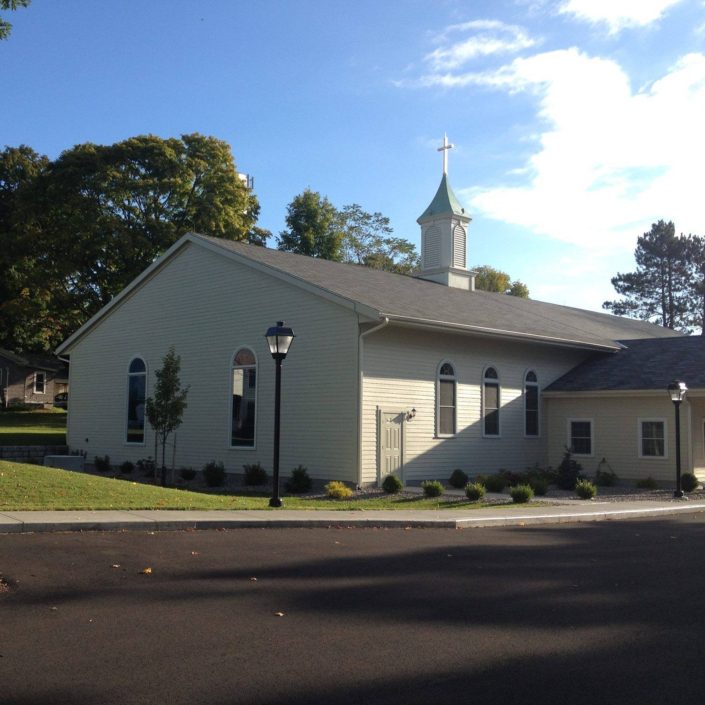
Eleazer Williams:
The Lost Mohawk
(Originally published in The People’s Voice, April 29, 2005)
Written by Darren Bonaparte
In a previous chapter, we encountered the story of the Tarbell boys, John and Zechariah, who were captured and adopted by the Mohawks of Kahnawake, and as tradition has it, later helped to “found” the community of Akwesasne. Today we look at another person whose existence was owed to captivity and adoption, the nebulous Eleazer Williams, the great grandson of Eunice Williams, the famous “unredeemed captive” taken by Kahnawake Mohawks in the raid on Deerfield, Massachusetts in 1704.
The Early Years of Eleazer Williams
When Eleazer was born is hard to determine, as his family was known to hunt far from Kahnawake at various times of the year, and no record of his baptism exists in old church records. He was the son of Thomas, or Tehorakwaneken, and Mary Ann Williams, or Konantewanteta, and was probably born around 1787. With the assistance of his relatives in New England, Eleazer and his brother John were sent to Massachusetts to be educated in 1800. In 1807 he was sent to Moors Charity School in New Hampshire, where he was to be educated along with other young natives, but only stayed a week. A modern biographer, Geoffrey Buerger, sees this as a time of disappointment for Eleazer, who aspired to a career in the Congregational ministry, but was more or less being told by his relatives that they only saw him as a mere “Indian” and not someone who could rise up through the ranks of New England society.
Several years later the young missionary was on his way home to Kahnawake, just in time for the War of 1812. Williams made many claims later in life about his experiences during this war, none of which have ever been substantiated by official documentation. By his account, he kept track of enemy troop movements, served in a ranger unit, commanded an artillery unit, and was given the title of Superintendent General of Indian Affairs by the United States government. Another claim was that he helped the Americans win the Battle of Plattsburgh by devising a clever ruse to foil the British forces. Not bad for someone who was only about 25 years old at the time…that is, if any of it was true.
Not long after the Battle of Plattsburgh, Eleazer travelled to Oneida Castle, where he broke his denominational ties to the church of his Puritan relatives and sponsors, and was confirmed into the Episcopal Church, the American counterpart of the Anglican Church or Church of England, in 1815. A fluent Mohawk speaker, Williams was able to communicate well with the Oneidas. The Oneidas were divided among two major factions, the Christian Party and the Pagan Party. With his persuasive oratorical skills, he was able to convince the Pagan Party to abandon their traditional ways and change their name to the Second Christian Party by 1817.
There was a lot of pressure on the Oneidas and the Stockbridge Indians (who lived with them at the time) to relocate from New York to Wisconsin. Eleazer eventually saw this as a wise move, due to the increasing pressures from their non-native neighbors, but it has been speculated that he saw it as an opportunity to create an “Indian Empire” in the Wisconsin wilderness that he would rule. By 1818 he was promoting the idea that the Oneidas, Stockbridges, Munsees, Brothertowns, Senecas of Sandusky, and tribes in Canada (including the people of Akwesasne) should move to a new reservation in Wisconsin where they could reorganize themselves into a grand confederacy. Negotiations resulted in a tract of land set aside for the New York Indians in Green Bay, Wisconsin.
By 1822, Eleazer Williams established a home there, followed the next year by about 150 Oneidas of the First Christian Party and an equal number of Stockbridge Indians. More came in later years. Williams married 14-year-old Madeleine Jourdain, daughter of a successful blacksmith and a woman of Indian descent. She came with 4,800 acres of land that would become known as the Williams Tract. Williams was ordained a deacon in 1826, but by 1832, the Oneidas dissolved their association with him, complaining that he neglected them. By 1842, the Bishop of the Episcopal Church forbade Williams from representing the Church in any capacity in Wisconsin.
Next in series: Eleazer Williams: The Lost Mohawk
By Darren Bonaparte, historian and author of The Wampum Chronicles. Reprinted with permission.
Darren Bonaparte is a cultural historian from the Akwesasne First Nation. He is a frequent lecturer at schools, universities, museums, and historical sites in the United States and Canada. He has written four books, several articles, and the libretto for the McGill Chamber Orchestra’s Aboriginal Visions and Voices. Darren is a former chief of the Mohawk Council of Akwesasne. He is the creator of The Wampum Chronicles and historical advisor to film and television. He currently serves as the Director of the Tribal Historic Preservation Office of the Saint Regis Mohawk Tribe.















